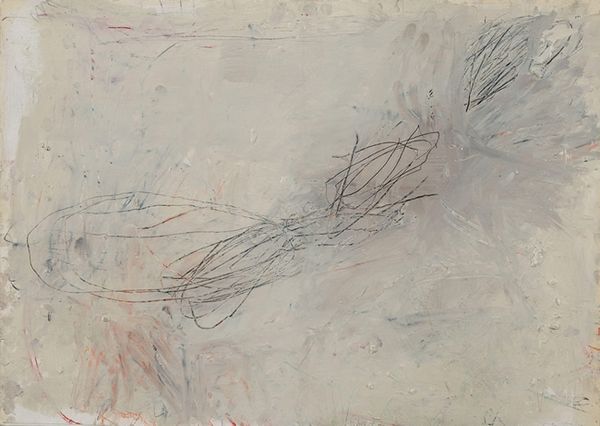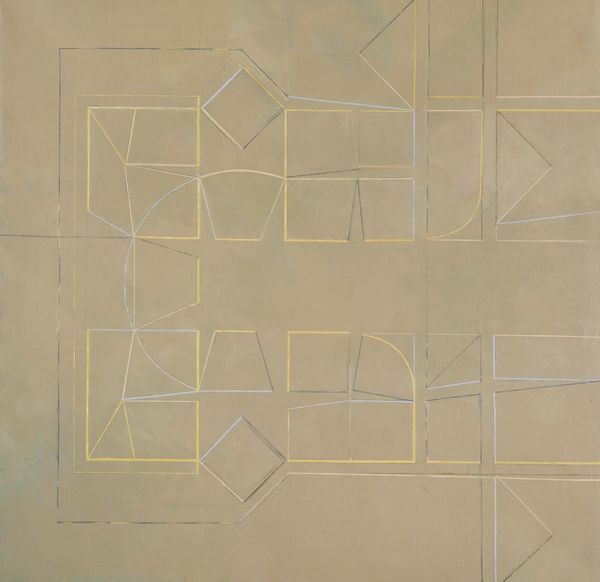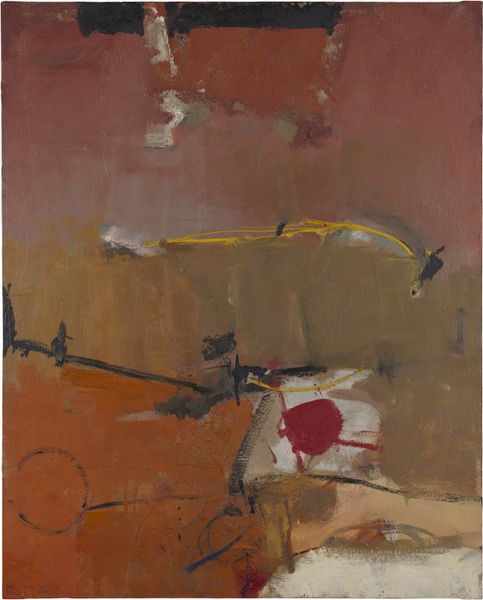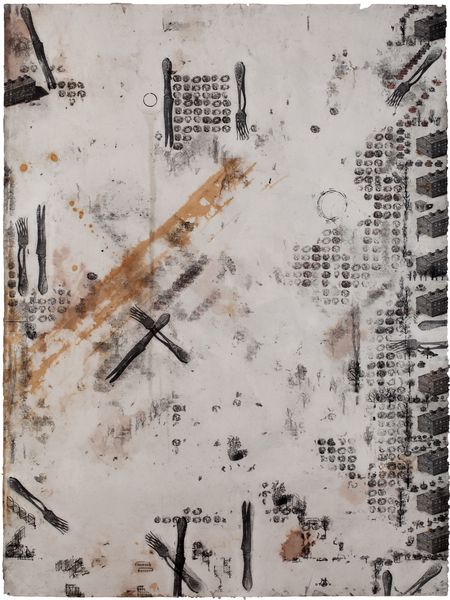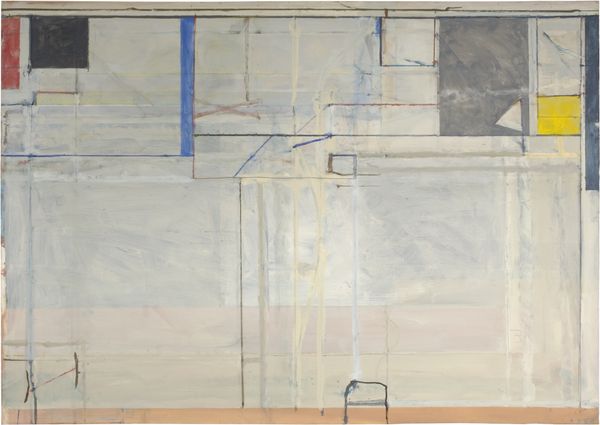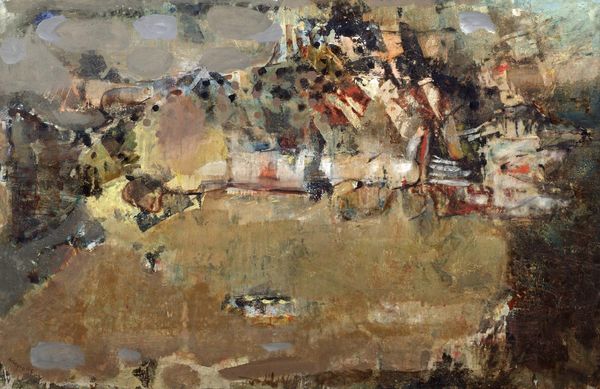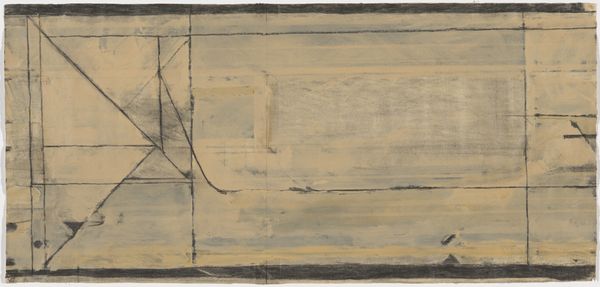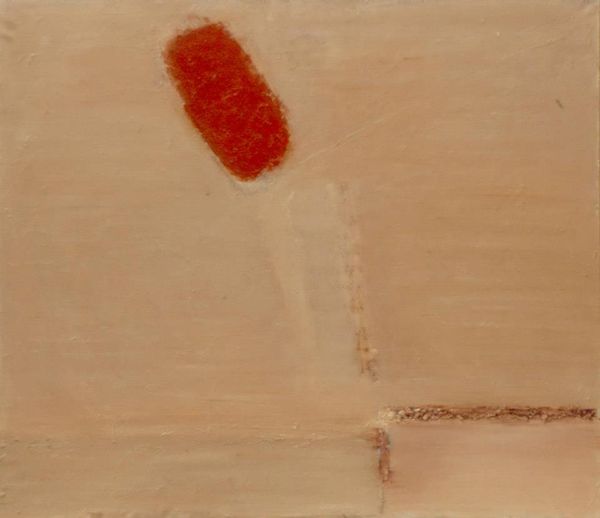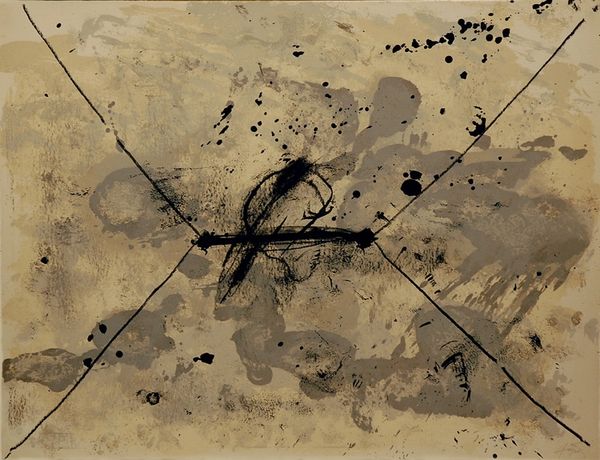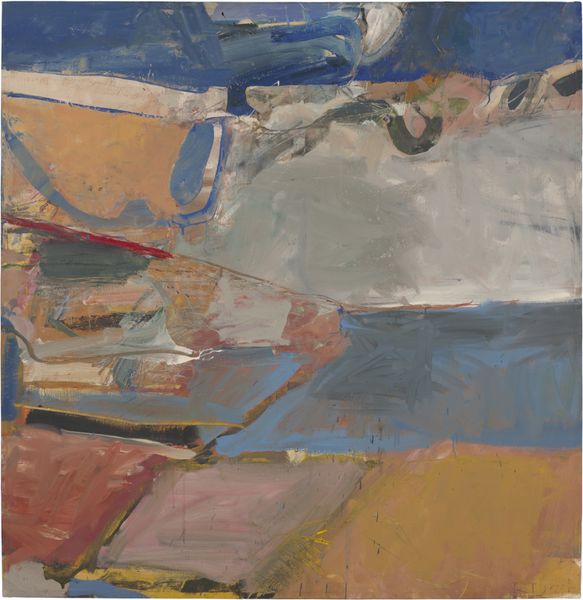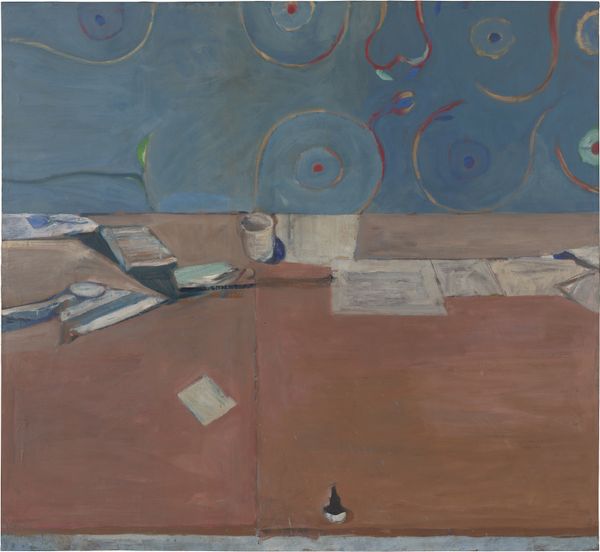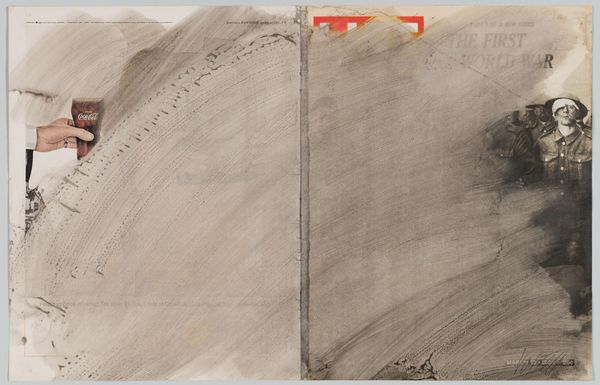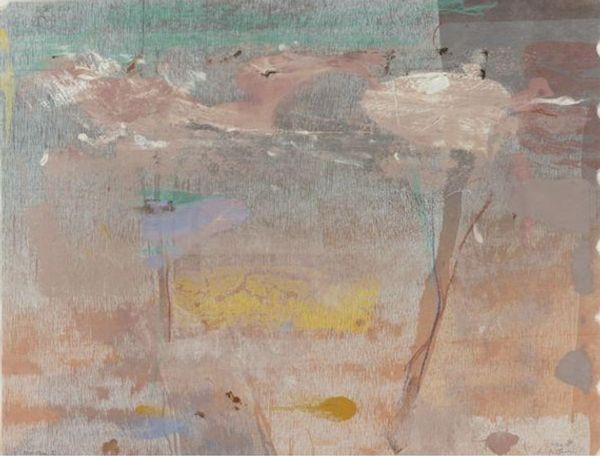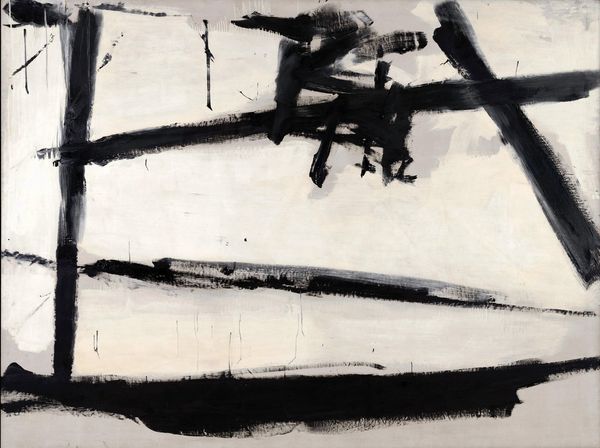
painting, oil-paint
#
abstract-expressionism
#
abstract painting
#
painting
#
oil-paint
#
bay-area-figurative-movement
#
abstraction
#
line
Dimensions: 97.8 x 142.9 cm
Copyright: Richard Diebenkorn Foundation
Curator: Right, let’s turn our attention to Richard Diebenkorn’s "#22 (Albuquerque)," painted in 1951, rendered in oil. What strikes you initially? Editor: Mmm, desert vibes for sure! All browns and muted tones...it's got that sun-baked feeling, but the lines feel like they are carving something unknown into the landscape of that quiet. Does that even make sense? Curator: It does. Diebenkorn spent time in Albuquerque during that period; we should consider his immediate surroundings. Notice how the surface seems worn, like aged stucco. That’s key; he’s consciously building up texture. Editor: True. I am drawn to the composition: stark linear elements cutting across these atmospheric fields of color. He is playing with tensions; there is harmony. Do you feel how balanced it feels even with its obvious dissonance? Curator: Precisely! Look at how he deploys lines: some almost architectural, like scaffolding, others purely gestural, spontaneous flicks of the wrist. I like that juxtaposition of the planned with the intuitive. It's reflective of the processes inherent to Abstract Expressionism. Editor: You nailed it! It’s interesting to see this kind of minimalist-yet-emotional interaction with space. There is something very internal and meditative. It feels almost elemental – like earth and wind rendered visible. A map almost. Curator: An apt description. His approach reflects a larger shift happening at that time: re-evaluating how industrial spaces are built through design but in a highly personalized manner. We get a sense that the hand is visible. Editor: I’m fascinated by how simple it seems, but then the eye just keeps finding little dramas... areas where the paint crackles and reveals hints of other colors underneath. Is this the history and memory inscribed onto its surface? Curator: Indeed. Diebenkorn forces the viewer to participate. We're forced to observe labor through the cracks, imperfections, or absences and actively fill in those spaces. His "Albuquerque" is much more than a mere visual exercise; it is an excavation site. Editor: This has definitely given me a fresh appreciation for how a seemingly simple piece of abstract work can speak volumes about place and time and the complex process involved in it's creation. Curator: Exactly, and seeing his work reminds us how physical the act of painting really is, and how deeply embedded his history and experience is reflected in this final surface.
Comments
No comments
Be the first to comment and join the conversation on the ultimate creative platform.
